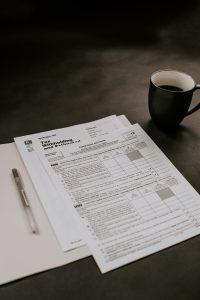The rate of change (ROC) indicator is a technical analysis tool that measures the percentage change in a security’s price over a specified period. In the forex market, the ROC indicator is commonly used to identify trends, momentum, and potential reversals. It is a versatile tool that can be applied to any currency pair and time frame.
The ROC indicator is calculated by dividing the current price by the price n periods ago, then multiplying the result by 100. The formula for ROC is as follows:
ROC = ((Price / Price n periods ago) – 1) * 100
The result is expressed as a percentage, and the default setting for the ROC indicator is 14 periods. This means that the ROC will calculate the percentage change in price over the last 14 periods. However, traders can adjust the period setting to suit their trading style and preferences.
The ROC indicator is plotted as a line chart that oscillates above and below a zero line. When the ROC is above the zero line, it indicates that the price is increasing at an accelerating rate. Conversely, when the ROC is below the zero line, it indicates that the price is decreasing at an accelerating rate. The zero line is a critical level as it represents the threshold between bullish and bearish momentum.
Traders can use the ROC indicator in several ways to identify trading opportunities. Here are some of the most common methods:
1. Trend identification: The ROC indicator can be used to identify the direction of the trend. When the ROC is above the zero line, it indicates that the price is in an uptrend. Conversely, when the ROC is below the zero line, it indicates that the price is in a downtrend.
2. Momentum confirmation: The ROC indicator can be used to confirm the strength of the momentum. When the ROC is above the zero line and rising, it indicates that the bullish momentum is increasing. On the other hand, when the ROC is below the zero line and falling, it indicates that the bearish momentum is increasing.
3. Divergence detection: The ROC indicator can be used to detect divergences between the price and momentum. A bullish divergence occurs when the price makes a lower low, but the ROC makes a higher low. This indicates that the selling pressure is weakening, and a bullish reversal may be imminent. A bearish divergence occurs when the price makes a higher high, but the ROC makes a lower high. This indicates that the buying pressure is weakening, and a bearish reversal may be imminent.
4. Overbought/oversold conditions: The ROC indicator can be used to identify overbought and oversold conditions. When the ROC is above a certain level, such as +50, it indicates that the price is overbought, and a correction may be imminent. Conversely, when the ROC is below a certain level, such as -50, it indicates that the price is oversold, and a rebound may be imminent.
In conclusion, the ROC indicator is a valuable tool for forex traders as it provides valuable insights into the price momentum, trend direction, and potential reversals. However, like any technical analysis tool, the ROC indicator should not be used in isolation and should be used in conjunction with other indicators and analysis methods to make informed trading decisions. Traders should also backtest their strategies and practice risk management to minimize losses and maximize profits.





